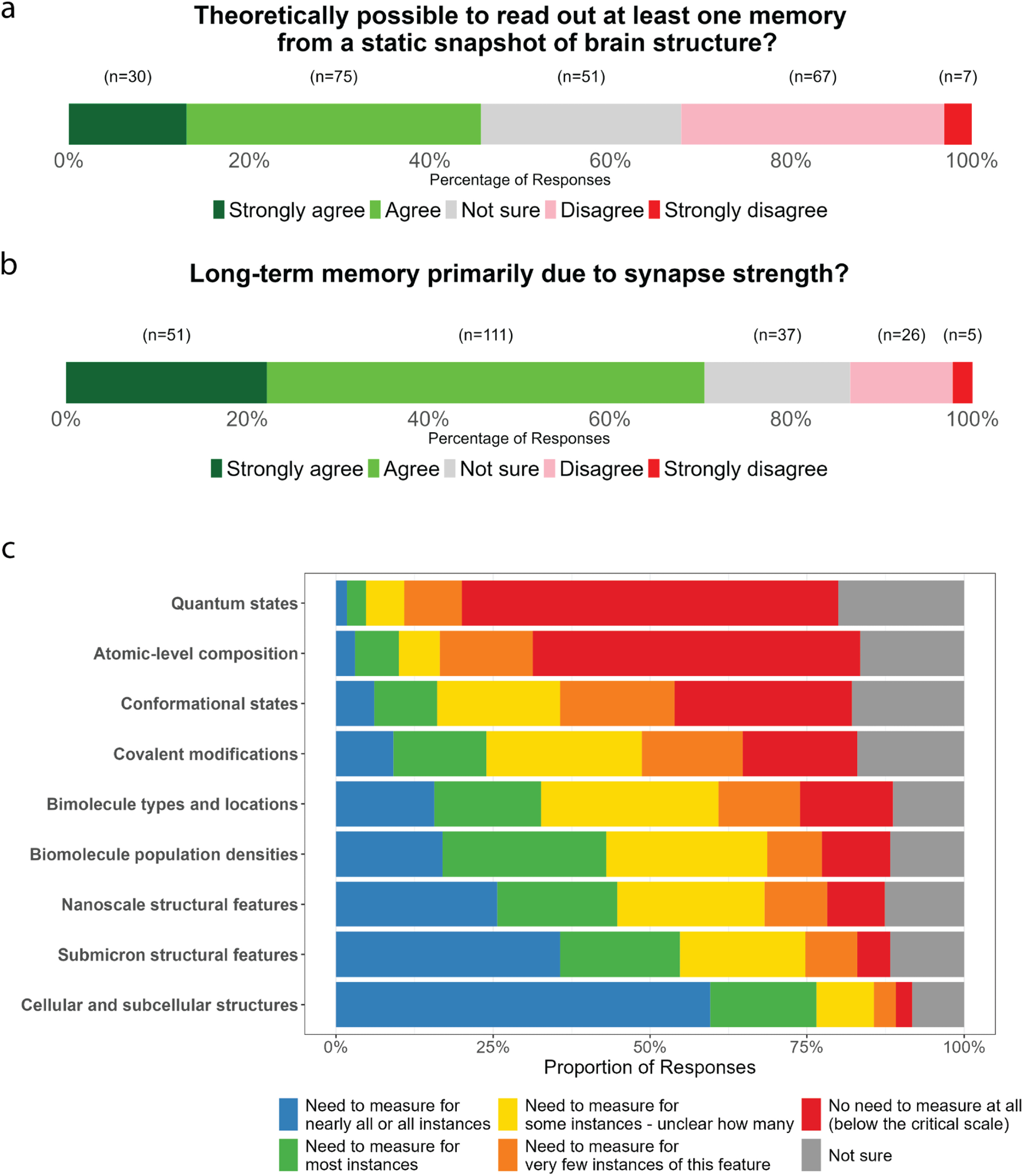Can memories truly be read from the brain’s structure alone? A global survey of neuroscientists reveals surprising agreement on some points, and sharp divides on others, with implications for future brain preservation and emulation.

Survey: What are memories made of? A survey of neuroscientists on the structural basis of long-term memory. Image Credit: Vitalii Vodolazskyi / Shutterstock
A recent paper published in the journal PLOS One surveyed neuroscientists to evaluate their beliefs about how memories are stored.
Recall of long-term memories enables one’s behaviors to be shaped by a lifetime’s experience. Earlier experiences must create some form of a memory trace in the brain for this to be possible.
Evidence suggests that long-lived memories are retained by relatively static and stable neurophysiological aspects. Moreover, long-term memories could be recalled even after prolonged global neuronal inactivity and depolarization, for example, during deep hypothermic circulatory arrest.
This distinction highlights that memory formation and recall rely on different processes, with formation disrupted by protein synthesis inhibition but recall largely unaffected once memories are established.
This means that the retention of long-term memories does not require ongoing global electrophysiological activity. Neuroscientists have suggested structural candidates for the physical basis of long-term memory, such as synaptogenesis, synaptic strength alterations, neuronal excitability alterations, intracellular phosphorylation, epigenetic modifications, and axonal myelination changes, as well as perineuronal net and extracellular matrix modifications.
Engrams, the neurophysiological substrates responsible for long-term memory, have been actively pursued over the past decade. Despite technological advances in the artificial manipulation of engrams and claims of a consensus that memories are stored in ensembles of synaptic connections, the extent of unanimity in the neuroscientific community about the neurophysiological basis of long-term memory is unclear.
The study and findings
In the present study, researchers surveyed neuroscientists on the structural basis of long-term memories. The survey was conducted between August and October 2024 in two cohorts of neuroscientists: 1) Computational and Systems Neuroscience (COSYNE) attendees with an abstract listed in conference booklets between 2022 and 2024, and 2) researchers with publications related to the neurophysiology of memory, i.e., engram experts.
The survey comprised 28 questions across six domains: demographics, theoretical implications of memory storage, structural basis of long-term memories, whole-brain emulation feasibility, brain preservation, and familiarity and comfort with topics discussed. A rank correlation analysis evaluated the relationships between participants’ responses to different questions. In total, 312 neuroscientists responded, with approximately three-quarters completing all mandatory sections of the survey.
They were initially asked if they believed extracting information of a specific, non-trivial long-term memory from a static synaptic connectivity map was theoretically possible. Over 45% of respondents agreed this would be possible, but 32.1% disagreed. When multiple choices were presented for what additional information might be needed for memory readout, “measurements of dynamically changing neuronal activity” was the most common choice. Other common selections included contextual information about experiences and mental states, as well as sensory input and motor output.
Further, most participants (70.5%) agreed that long-term memories are maintained by synaptic strengths and neuronal connectivity patterns. Besides, participants were asked to provide subjective probability estimates on whether memory-related information could be theoretically extracted from brains preserved using available techniques, e.g., aldehyde-stabilized cryopreservation (ASC). The median subjective probability estimate for this question was 41%. However, the distribution was bimodal, with peaks near 75% and 10%, showing that views were sharply divided rather than clustered around the median.

Beliefs about the physical basis of memory. a) Responses to the question ‘To what extent do you agree with the following statement: “Given the scientific knowledge assumed in Point A existed, it would be theoretically possible to read out the information corresponding to at least one specific non-trivial memory from a static snapshot of the structure (including biomolecules) of an organism's entire brain.” b) Responses to the question ‘Some neuroscientists have suggested that, while molecular and subcellular details play a role, the majority of information for long-term memories is likely physically stored in the brain at the level of neuronal connectivity patterns and ensembles of synaptic strengths (e.g., Poo et al., 2016). To what extent do you agree with the following statement: “The structural basis of long-term memories primarily consists of lasting changes in neuronal connectivity and ensembles of synaptic strengths, rather than in molecular or subcellular details.” c) Participants’ views on the critical scale for memory encoding in the brain.
In addition, the median probability estimate was 40% for the question asking whether a whole-brain emulation was theoretically possible using a preserved brain, assuming only the generic knowledge of neuronal subtypes’ electrophysiological properties. The median probability increased to 62% in a scenario where active recordings could be taken before brain preservation.
To the question asking by which year a whole-brain emulation would exist for mouse, human, or Caenorhabditis elegans, the median estimate predicted that a brain would be emulated around 2045 for C. elegans, 2065 for a mouse, and 2125 for a human. The researchers found that participants’ views did not vary by their primary approach to neuroscience, i.e., theoretical, wet-lab, or both.
Besides, participants’ education level had no significant effect. Nevertheless, there were significant relationships between the theoretical views of respondents and their practical predictions. That is, the probability estimates for extracting information on long-term memories from a preserved brain were associated with the theoretical viewpoints of participants.
These probability estimates were robustly correlated with participants’ belief in the theoretical possibility of memory extraction from static brain structure and the possibility of whole-brain emulation without dynamic recordings. However, preservation expertise, neural modeling expertise, or memory expertise did not correlate with ASC probability estimates. A small but significant negative correlation was observed with age (ρ = −0.23), indicating that older participants tended to assign lower probabilities to successful memory extraction from preserved brains.
Conclusions
In sum, the findings shed light on the beliefs of the neuroscientific community regarding the physical basis of long-term memory. Most participants endorsed that long-term memories are maintained by synaptic strengths and neuronal connectivity patterns rather than subcellular or molecular details. Nevertheless, there was no consensus on which neurophysiological scale or feature is critical for storing memory.
Some boundaries emerged, such as a general agreement that atomic-level biomolecular states are irrelevant, while subcellular structures at ~500 nm resolution would need to be included. Between these scales, however, no clear consensus was reached.
Correlation analyses further demonstrated that beliefs about whole-brain emulation and memory extraction were closely linked, showing internal consistency between theoretical stances and practical predictions.
Overall, these findings have implications for theoretical neuroscience and technological developments aimed at preserving and extracting memory-related information.
The authors also noted important limitations, including low survey response rates, the assumption of ideal preservation conditions, and the restricted cohorts studied. They further emphasized that potential ethical and societal implications, such as mental privacy and life extension via brain emulation, warrant careful consideration.